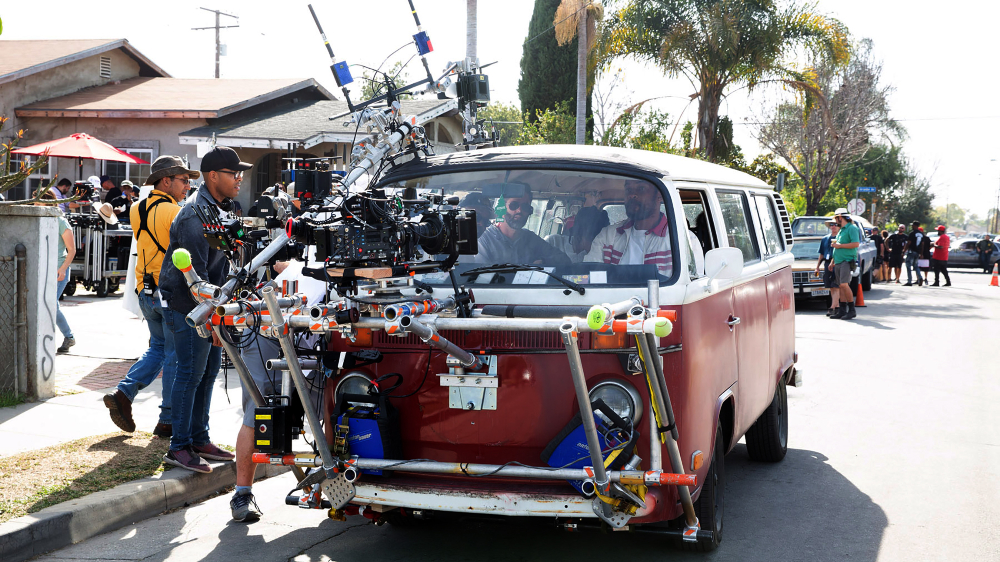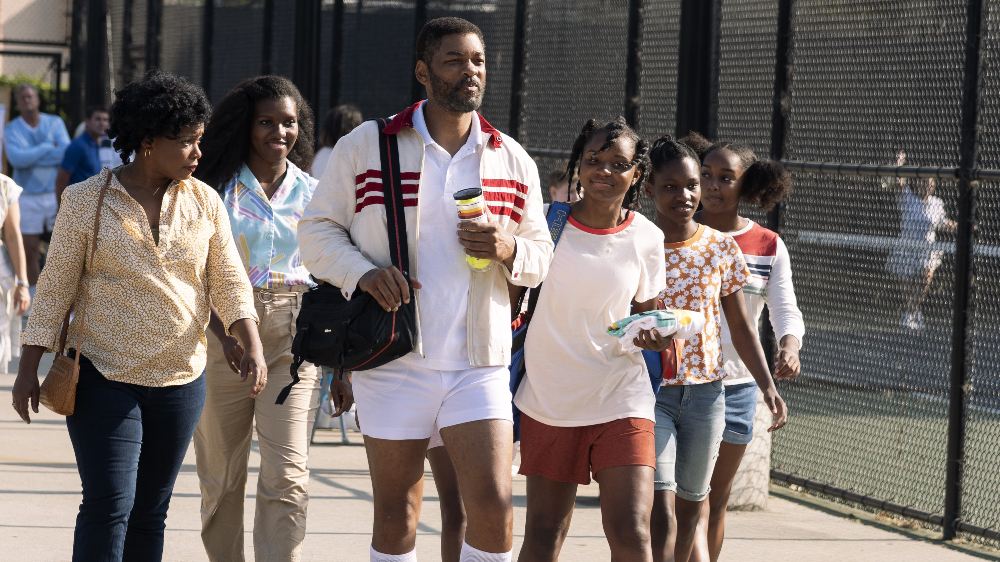
Oscar-caliber performances anchor King Richard, the story of Richard Williams raising daughters who would become the tennis superstars Venus and Serena Williams (played as teens by Saniyya Sidney and Demi Singleton).
Will Smith portrays Williams as a force of energy, a father who cajoles and connives his fantasy into reality. Aunjanue Ellis is just as impressive as his wife Oracene, a pillar of stability despite the upheaval around her.
Set largely in the 1990s, the film travels from tough Compton neighborhoods to posh LA country clubs and eventually, the professional tennis circuit. Through the story, written by Zach Baylin and directed by Reinaldo Marcus Green, we watch the evolving relationship between Richard and his family — that of a demanding father dealing with increasingly independent young women.
King Richard was shot by Robert Elswit, ASC, a cinematographer known for his collaborations with Paul Thomas Anderson (Boogie Nights, Magnolia) and George Clooney (Good Night, and Good Luck). Elswit won an Oscar for Anderson’s There Will Be Blood.
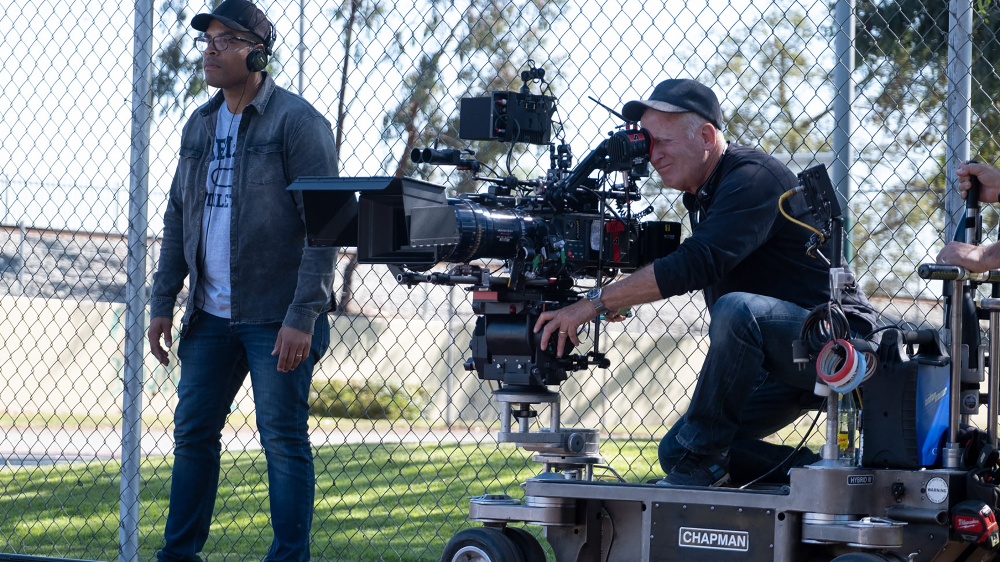
Elswit spoke with Below the Line from Rome via Zoom:
Below the Line: When did you agree to work on King Richard?
Robert Elswit: I met Rei about three years earlier when he was a fellow at the Sundance Directors Lab. He was workshopping Monsters and Men. I was really impressed by him, he seemed incredibly capable. He called me up out of the blue and said he was sending a script. It was not a hagiography, it wasn’t like a Knute Rockne-type biopic with newspaper headlines going by. I read it, we talked about it. and I thought, ‘you know what? I get to stay in LA, he’s the nicest guy in the world, let’s do it.’
We didn’t have a lot of prep because of Will’s schedule, so what was going to be eight weeks turned into five. We started, shot for about 15 days, didn’t figure out an enormous amount of stuff. Then the pandemic hit, we shut down, and as horrible as it was, it gave us the breathing room to figure out what we couldn’t in our prep.
We were down for almost seven months. My wife Amanda and I got a one-day-old baby on foster care who is now 17 months old.
That period also allowed the young girls cast in the movie to become better friends. When we started shooting again, they’d become like a real family. When they were together, they would sing songs, do improv moments. They would interact in ways that you thought they were really sisters. When they were doing all that stuff in the van, it was so alive and so real. We shot scads of stuff that could never get into the movie because it meant nothing. It had no story content. It was just them being great, wonderful friends together. It was just a joy to watch and to be there on set with them.
BTL: How did you and Green agree on a visual approach to the story?
Elswit: I think we agreed to be as simple as possible. When you have a cast of underage kids, your time restrictions are really specific. You have to take breaks, they have to go to school, they can’t work 10 hours a day. Because of the nature of the scenes, Rei never wanted Will or Aunjanue to play opposite, say, a script supervisor. We weren’t going to have doubles in the foreground. He wanted the kids there. We were always going to have the real actors there all the time.
That meant figuring out the least complicated way of staging and shooting everything. That informed us, in a way, I think. You can’t point fingers at yourself, you can’t show how clever you are as a filmmaker. It’s not about that, it’s about finding the clearest, easiest way of staging the scene and photographing it in a way that you have enough time with the actors. You end up doing the simplest lighting, the simplest setups, the simplest design, so you maximize the time you have with the kids and the adults. That’s what drove the movie.
I wish I could say we had these brilliant ideas about style, but it really was finding the best locations and trying to light them as realistically and unselfconsciously as I possibly could. Minimizing the amount of time in between setups. I think it actually helped the movie. We didn’t make the actors struggle. We didn’t make complicated things for them to do.
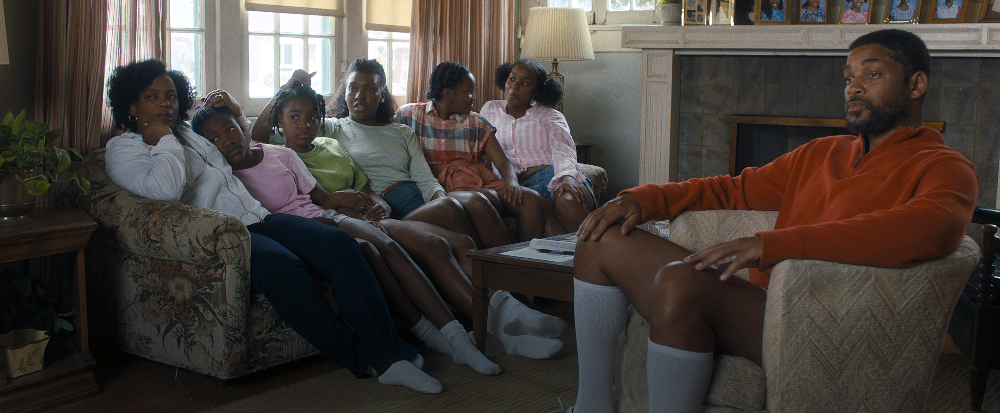
BTL: Did you have trouble working with certain period details?
Elswit: I have to credit our two production designers, Wynn Thomas and William Arnold. Also Isha Price, who was our representative from the Williams family, one of the sisters who became a lawyer. She was with us all the time.
For the Williams home, we selected a ’30s house instead of a late ’40s house, which allowed it to feel a little more middle class. It was a little less authentic than Isha was initially comfortable with, but it had good architectural details. We had to rebuild it on a stage after we were shut down. It’s still incredibly tight. The kitchen is smaller than most people’s wardrobe closets, and the actual living room and dining space were tiny.
That complicated staging, especially with five kids and two adults… how much movement can they do? Where can they go? Where can they sit? Things that drove me crazy. How do you put seven people on a couch in front of a window? Having a conversation with Rick Macci [Jon Bernthal]? They’re all dressed in tennis whites or similar clothes, they’re backlit, initially with a real street behind them.
Later, we couldn’t go back to that location, so we built it on a stage and ended up putting a green screen back there.
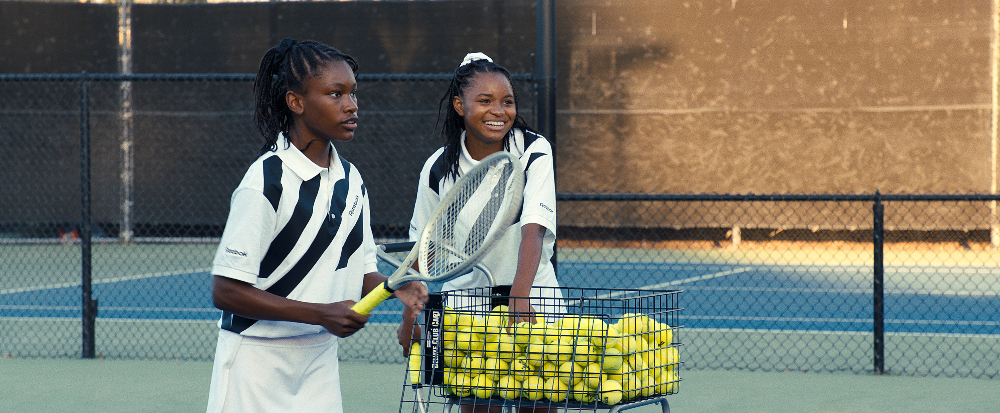
BTL: Your approach to the tennis matches is very distinctive. You’re often behind the players, for example.
Elswit: Rei and I watched Wimbledon, Battle of the Sexes, and Borg vs McEnroe over and over again. They’re all a little different. In Wimbledon, they made very specific, clear choices about designing shots around certain moments, certain points in the story. Crane moves and all these visual effects. It was the opposite of what we felt was right for King Richard. The style of our film all along was going to be simple, unpretentious, not calling attention to itself. At the same time, not have it look like we’re shooting TV coverage with two-dimensional shots of the court.
Warner Brothers sent us to the US Open, where we met Oracene and the other sisters, and watched Serena play. It was the first time we experienced professional tennis at that level, sitting 15 feet away. We realized that there are places to be on court to see how fast the ball is traveling, how hard the ball is being hit, how athletic the players are. And that was being wide and physically close, but not interfering, not going on the court.
Venus has two important matches. With Arantxa Sanchez Vicario [Marcela Zacarias], we’d be behind the baseline; with Shaun Stafford [Kaitlyn Christian], we’d move with the players. The actors playing them were gifted tennis players, so their movements, their ability to move back and forth, were very easy to control, easier than our girls. They could hit real balls, and we were able to shoot towards them over our girls.
At the same time, those matches are a matter of record. What Venus did, what the other two women did, what the points were and how they scored and everything else — we had to be completely accurate about that.
One other thing: Saniyya, who plays Venus, had never played tennis before. We could shoot her backhand, shoot her forehand, but not have her hit real tennis balls. Those are almost all digital tennis balls. If we knew that we were going to create the tennis balls digitally, in post-production, we could choreograph her moves very carefully.
By being behind the baseline and on either side of the net with longer lenses and four cameras, we could get the basics of the plays down, see the action happen, and also design coverage that would tell the story. Those moments that tell you where Venus is in the match emotionally, based on not just what the score is, but how she’s feeling about what’s going on, her interaction with her father, and with the rest of her family.
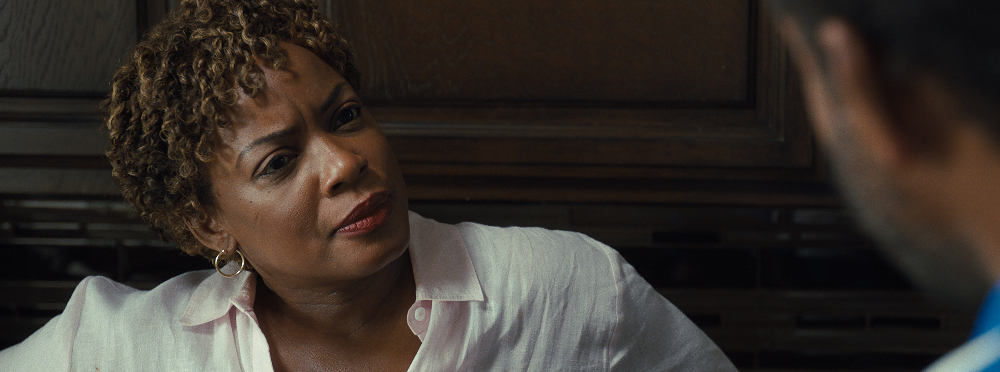
BTL: Let’s talk about how you worked with some of the actors. For example, the scene where Oracene argues with Richard about whether Venus can compete in a match. You’re executing complicated camera moves to capture their heightened emotions…
Elswit: The narrative of that scene is Oracene telling Richard that he is always running away, and then he runs away. He goes out into the living room, she follows him and says, ‘you’re always running away.’
We have coverage back and forth between them, so it was really like finding a way to always feel her honesty and her sincerity and her drive and her frustration with him. It was always there. It’s something they worked out as actors. The true story, of course, is that three years later, they weren’t married.
The scene grew out of a really intense period of rehearsal and interaction between Will and the brilliant, extraordinary Aunjanue Ellis. They found all of that, they structured and shaped the scene so that when Rei and I watched the rehearsal, which we did the day before, we could sit down and say that it was all about him trying to run away and not being able to.
BTL: The scene ends with the camera over Richard’s shoulder looking at Oracene, who is crying. You hold that shot so long, it’s an incredible moment.
Elswit: It’s her. I mean it’s just her. We turned the camera on. I mean, I honestly can’t say more. It’s watching two extraordinary actors do things that you very rarely get the experience of seeing through a camera. You’re watching life break out in front of you.
It happened every time I saw Aunjanue Ellis working. She brought everybody up, she was a great mentor to everyone on that movie. She was a joy and a privilege to be around.
